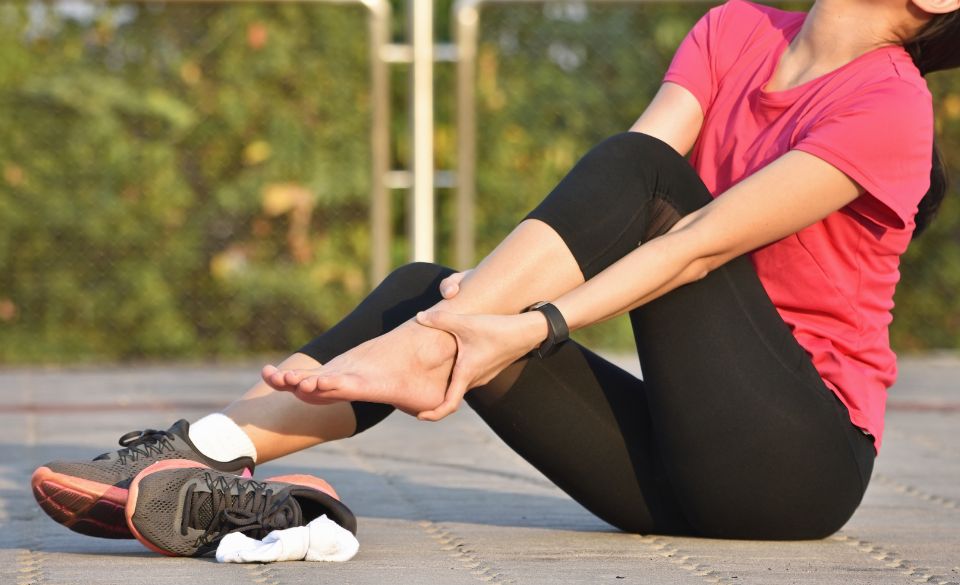
Best Ways To Recovery From A Running Injury
Page Contents
Running injuries are becoming far too common and can be very discouraging for runners. Whether it’s from overtraining, muscle imbalance, poor technique, or any number of other factors, it’s important to take the appropriate steps in order to quickly and safely return to running. Let’s take a look at the Best Ways To Recovery From a Running Injury.
1. Seek Professional Help
The first step in recovering from a running injury is to visit a medical professional. Seeing a physical therapist or a doctor can help identify the cause and the severity of your injury.They will then be able to create the best treatment plan for you and help you return to running as soon as possible.
2. Take Time Off
As difficult as it is to take time off from running, it is probably the most important aspect of recovery. Resting your injured body part is an absolute must and can make the difference between a full recovery and lingering injury.
3. Work on Strength
Once you have taken enough time off, strength and balance exercises can help you avoid further injury and eventually return back to running. Strengthening the muscles surrounding the injured area can help reduce or prevent the risk of reinjury. Additionally, regular stretching can help increase flexibility, reduce pain, and improve running mechanics.
4. Start Slower
Once you start running again, it’s important to take it slow. Try to build up your mileage gradually, rather than trying to tackle too much too soon. Start off with shorter distances and slower speeds until you feel comfortable and the pain has decreased.
5. Listen to Your Body
It’s important to listen to your body and be aware of any signs of discomfort. If you start to feel any pain, stop and give yourself some rest. Don’t push through the pain–it’s an indication that something is wrong and needs to be addressed.
Recovering from a running injury can be a long and challenging process, but with the proper steps and the right attitude, it is possible to get back on your feet and running again. If you follow these tips, you can be sure to make a quick and complete recovery.
How Long Does It Take To Recovery From A Running Injury
As a runner, you know the importance of taking care of your body. But every now and then, a running injury can occur and disrupt your training regimen. While they can be a nuisance and sometimes prevent you from achieving your goals, it is important to understand how long it will take to recover from a running injury.
The amount of time it takes to recover from a running injury will vary depending on the type and severity of the injury. Generally speaking, the recovery time for a running injury can range from just a few days for milder injuries to several weeks for more serious ones.
For minor running injuries such as muscle strains, sprains, or bruises, the recovery time is usually around a week or two. Generally, rest and allowing the injury to heal are enough to get back into your normal running routine. But if the injury is more serious than that, such as a fracture, tendon tear, or ligament damage, the recovery time may take longer.
In much more severe cases, surgery may be needed to repair the injury, which will require weeks or even months of recovery time. During this period, the runner will need to focus on rehabilitating the injury with physical therapy and activities like strength training, stretching, and aerobics. This can help you regain your strength and flexibility until you are able to return to running.
The recovery time can also be influenced by the runner’s age, gender, overall health, and if any medications were taken. For example, an older runner or one with underlying health conditions may require a longer recovery time than a younger, healthier athlete. It is important to consult with your physician to develop an individualized recovery schedule.
When it comes to returning back to running after an injury, it is important to be mindful and follow a gradual progression. No matter how impatient you may be, it is important to not rush back into full-fledged running too soon. Taking too much time off from running can lead to a decrease in fitness, but returning too soon can lead to re-injury.
The best course of action is to follow the advice of your physician and gradually build back up to your pre-injury running regimen. Listen to your body and if something doesn’t feel right, back off and wait until you can start running again without any pain or discomfort.
Recovering from a running injury can be a slow, but it is an important process to ensure you are able to get back out pounding the pavement without any setbacks. It is always wise to discuss the risks and recovery time with your physician so that you can safely and effectively return to running without any further injury.
How To Recover From Long Term Injuries As A Runner
As a runner, injuries can be an unpleasant part of the sport, but for some athletes, the injury can be paralyzing. For many, long term injuries can be among the toughest to come back from and can take an emotional as well as a physical toll. Recovering from a long term running injury can be a difficult process, but with dedication and commitment it is possible to come back stronger than ever before.
First and foremost, it is important to take the necessary time to rest and recover. While no runner wants to hear this, rest is essential in order to heal and prevent reinjury or aggravating the current injury. Allow your body the time it needs to heal and decrease your physical activity, while continuing to improve your overall fitness with activities such as cycling, swimming, and walking.
Prior to returning to running, it is vitally important to visit a physical therapist or doctor to get an opinion on the injury status. Work with them to create a plan and timeline for your strength training, cross-training, and running, as each person is different and will heal and strengthen at different paces.
When the injury has to the point where you can begin running again, it is essential to ease into it and not push your body too hard, too soon. Start with a walking program, then progress to a light jog and then to running. When running, focus on your form and gradually increase your distance and intensity.
In order to recover from a long-term running injury, it’s best to also focus on proper nutrition and hydration, both of which are essential for healing. Eating a mainly nutritious diet, strong in fruits and vegetables, as well as complex carbohydrates, is important for providing fuel and recovering from injury. Hydrating adequately is also extremely important. Prehydration with 16 to 24 ounces of water 2 to 4 hours prior to running and replacing necessary electrolytes after your run are always recommended.
In order to make a full recovery, it is important to practice patience and listen to your body. Do not expect to jump back into your previous running schedule, as this can aggravate your injury. Doing so could cause set backs and impede your progress. Everyone is different and recovers at different rates, so progress slowly and commit to a consistent, step-by-step recovery plan.
Recovering from a long term running injury can be tough, but with a little patience, perseverance, and consistency, it’s possible to come back stronger than ever before. With the right amount of rest, proper forms of exercise and nutrition, as well as dedication and commitment, you will be sure to get back on your feet and run strong in no time.


